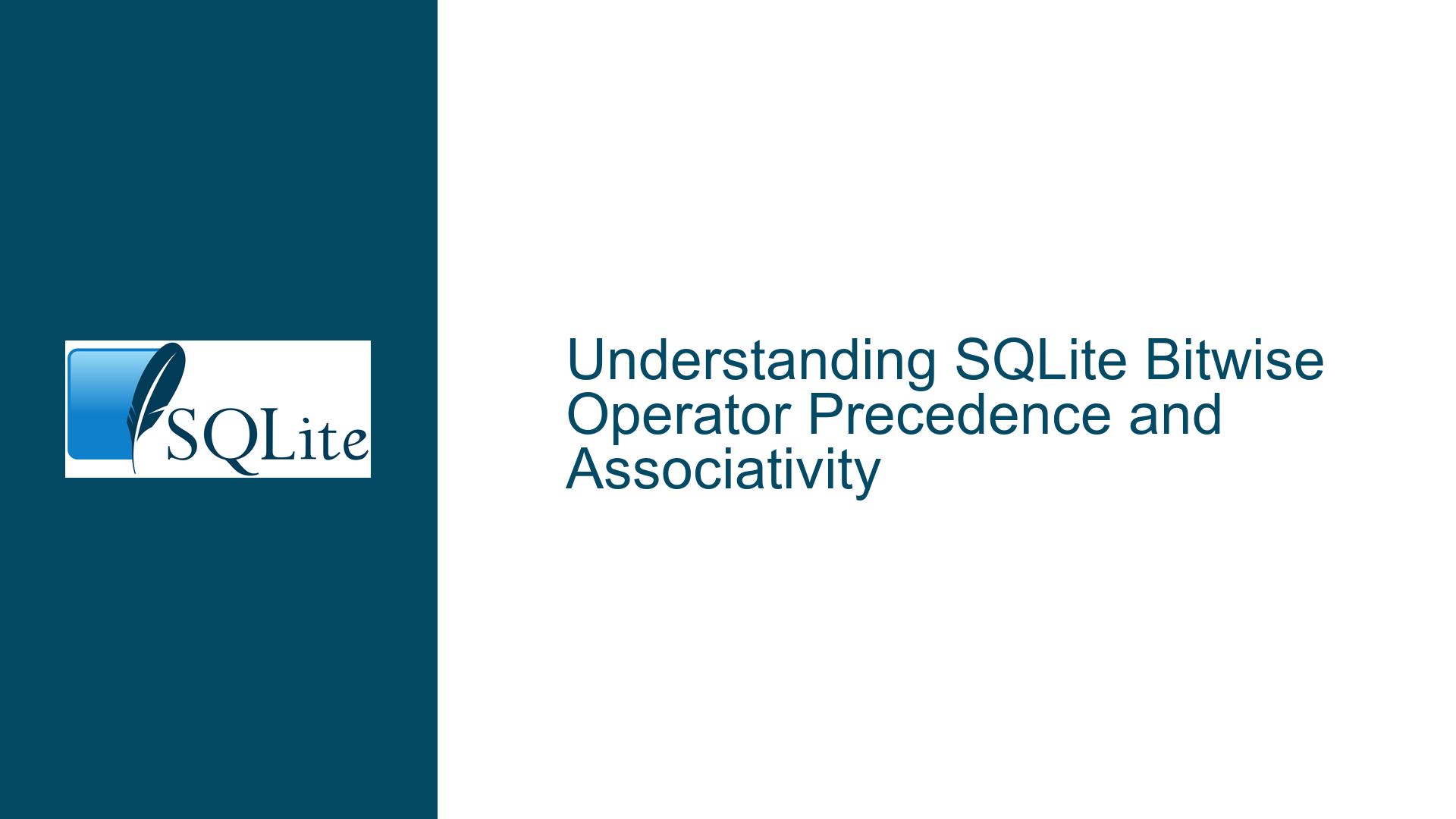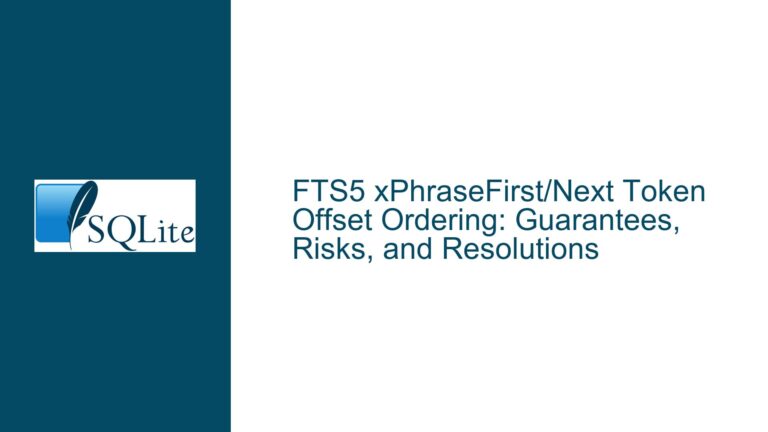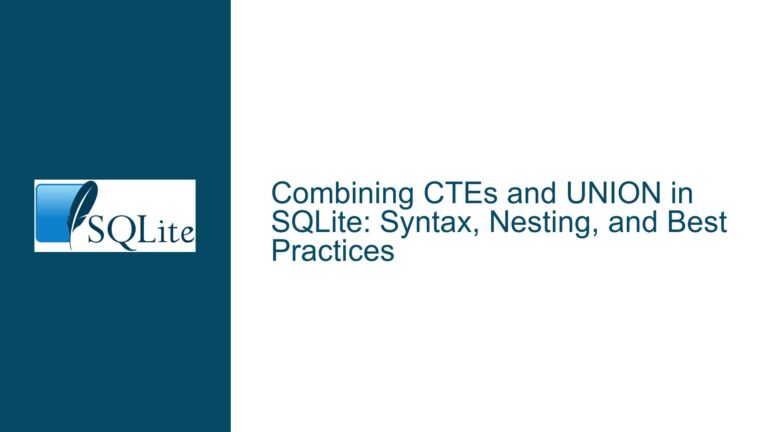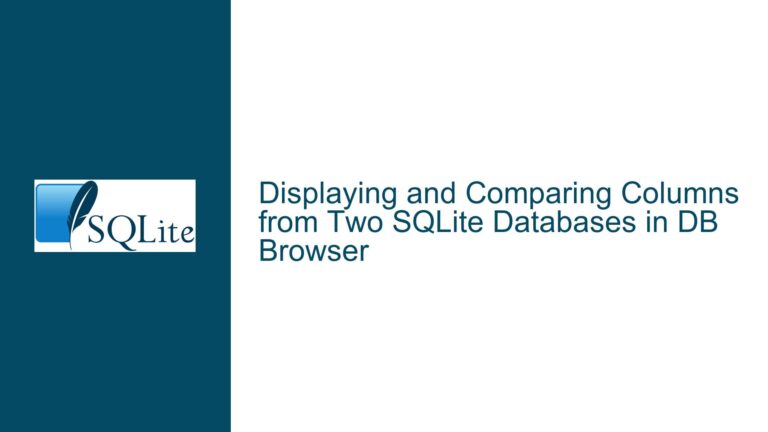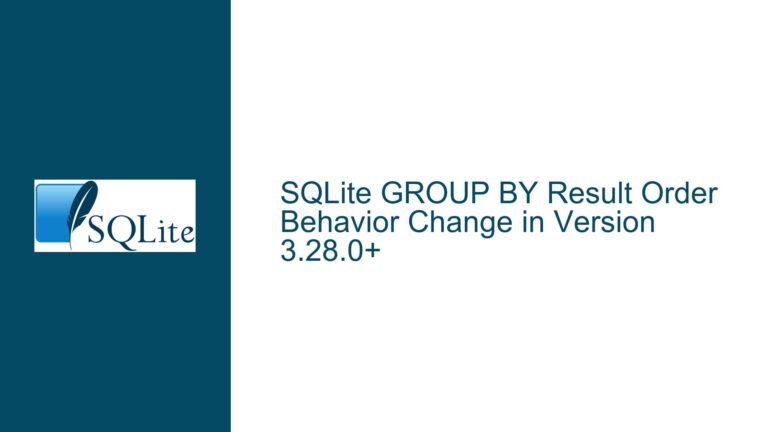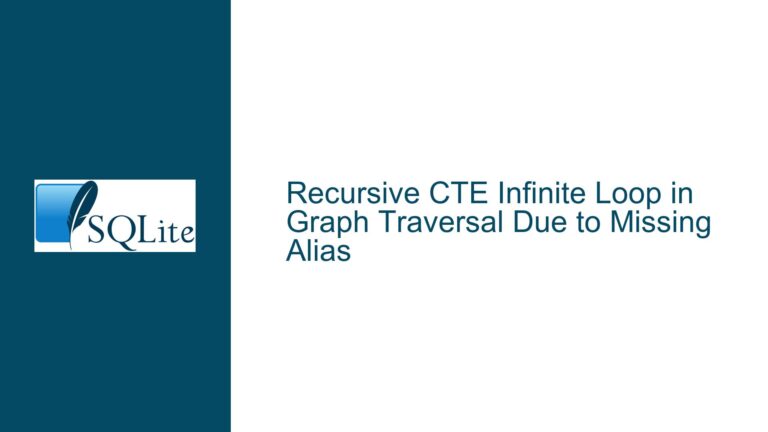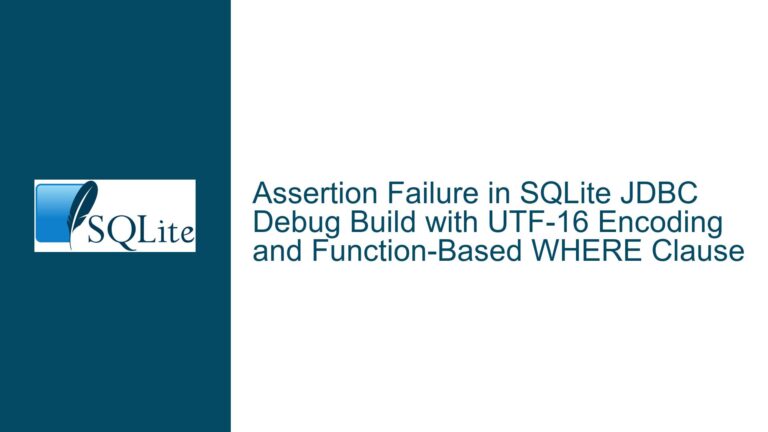SQLite Bitwise Operator Precedence and Associativity
SQLite Bitwise Operator Precedence and Left-to-Right Evaluation
In SQLite, bitwise operators such as <<, >>, &, and | are used to perform bit-level operations on integer values. Unlike in the C programming language, where shift operators (<< and >>) have higher precedence than bitwise AND (&) and OR (|) operators, SQLite treats all these operators as having the same precedence level. This means that in SQLite, the evaluation order of these operators is determined by their left-to-right associativity rather than by a strict precedence hierarchy.
For example, consider the SQLite query:
SELECT 5 & 1 << 1;
In SQLite, this query returns 2. This result can be understood by evaluating the expression from left to right:
- First,
5 & 1is evaluated, which results in1. - Then,
1 << 1is evaluated, which results in2.
In contrast, in C, the same expression would be evaluated differently due to the higher precedence of the shift operator:
- First,
1 << 1is evaluated, which results in2. - Then,
5 & 2is evaluated, which results in0.
This difference in evaluation order highlights the importance of understanding how SQLite handles operator precedence and associativity, especially when porting expressions from other programming languages like C.
Interrupted Write Operations Leading to Index Corruption
The core issue in the discussion revolves around the behavior of bitwise operators in SQLite, particularly their precedence and associativity. The primary concern is whether the left-to-right evaluation order of these operators can be relied upon, especially when compared to other programming languages like C.
One of the key points raised is that SQLite’s documentation does not explicitly state the associativity of most binary operators, including bitwise operators. This lack of documentation can lead to confusion, particularly for developers who are accustomed to the operator precedence rules in other languages. However, it is clarified that SQLite’s parser favors left association, which means that operators of equal precedence are evaluated from left to right.
This left associativity is implemented using the Lemon parser’s %left directive in the SQLite3 grammar rules (parse.y). This directive explicitly specifies that the operators should be left-associative, ensuring consistent behavior across different versions of SQLite. Given SQLite’s strong commitment to backwards compatibility, it is highly unlikely that this associativity will change in future releases.
Additionally, the discussion touches on the precedence of operators in SQLite. While the documentation does not provide a detailed precedence table for all operators, it is stated that the precedence of operators is also unlikely to change. This stability in operator precedence and associativity provides a reliable foundation for writing SQLite queries, especially when dealing with complex expressions involving bitwise operators.
Implementing PRAGMA journal_mode and Database Backup
To ensure that your SQLite database operates correctly and efficiently, especially when dealing with complex queries involving bitwise operators, it is important to understand and implement best practices for database management. One such practice is the use of the PRAGMA journal_mode statement, which controls the journaling mode of the SQLite database. The journaling mode determines how SQLite handles transactions and ensures data integrity in the event of a crash or power failure.
The PRAGMA journal_mode statement can be set to one of the following values:
DELETE: This is the default mode. The journal file is deleted at the end of each transaction.TRUNCATE: The journal file is truncated to zero length at the end of each transaction.PERSIST: The journal file is not deleted or truncated, but the header is overwritten to indicate that the journal is no longer valid.MEMORY: The journal is stored in memory rather than on disk, which can improve performance but reduces durability.WAL(Write-Ahead Logging): This mode uses a write-ahead log instead of a rollback journal, which can improve concurrency and performance.
For most applications, the WAL mode is recommended as it provides a good balance between performance and durability. To set the journal mode to WAL, you can use the following SQLite command:
PRAGMA journal_mode=WAL;
In addition to setting the journal mode, it is crucial to implement a robust database backup strategy. SQLite provides several methods for backing up a database, including the use of the .backup command in the SQLite command-line interface (CLI) and the sqlite3_backup_init API for programmatic backups.
The .backup command in the SQLite CLI allows you to create a backup of an open database to a specified file. For example:
.backup main backup.db
This command creates a backup of the main database to the file backup.db.
For programmatic backups, the sqlite3_backup_init API can be used to create a backup of a database within an application. This API provides fine-grained control over the backup process, allowing you to specify the source and destination databases, as well as the progress of the backup.
By combining the use of PRAGMA journal_mode with a robust database backup strategy, you can ensure that your SQLite database remains consistent and recoverable, even in the face of unexpected events such as power failures or crashes.
In conclusion, understanding the nuances of SQLite’s bitwise operator precedence and associativity is essential for writing correct and efficient queries. By leveraging SQLite’s left associativity and stable operator precedence, you can avoid common pitfalls and ensure that your queries behave as expected. Additionally, implementing best practices such as setting the appropriate journal mode and maintaining regular database backups will help safeguard your data and maintain the integrity of your SQLite database.
